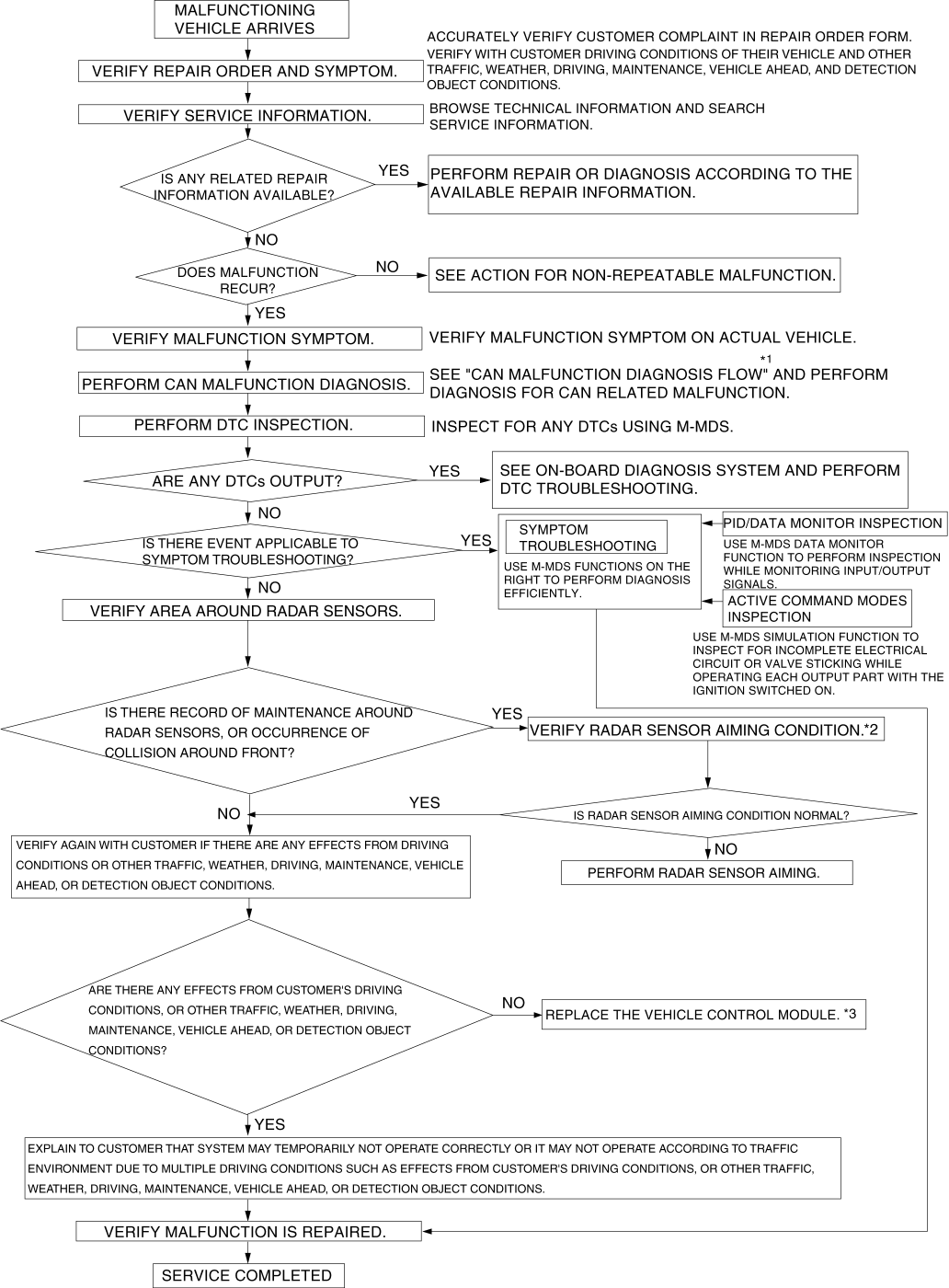
When performing an asterisked (*) troubleshooting inspection, shake the wiring harness and connectors while performing the inspection to discover whether poor contact points are the cause of any intermittent malfunction. If there is a problem, inspect to make sure connectors, terminals and wiring harnesses are connected correctly and undamaged.
When the system component parts are replaced/removed/installed, the radar sensor aiming adjustment and initialization settings for the sensor and the module must be performed. Perform the relevant initial setting servicing referring to the corresponding removal/installation procedure.
The vehicle control module (V/C-module) is a control device which monitors the vehicle ahead using radio waves emitted from the radar sensor which reflect off the vehicle ahead and return to the radio sensor part of the control module. The vehicle control module (V/C-module) may not operate normally under the following conditions:
Effects of traffic conditions
Sudden change in distance with vehicle ahead such as another vehicle cutting into drive lane
Poor roads, curves, changes in slope (detection of different distance from actual vehicle distance due to vehicle ahead being temporarily out of detection area)
Effects of weather conditions
Rain, snow, or fog (beads of water, radio reception distortion due to cast-off from vehicle ahead)
Effects of driving conditions
Load conditions (vehicle ahead is out of detection area of radar sensor due to large change in vehicle posture)
Effects from maintenance condition of vehicle
Dirt on radiator grille ornament, modifications, application of stickers (including transparent types), scratches, or damage
Effects of vehicle ahead
Excessively dirty vehicle, special type of vehicle (such as unloaded trailer) (reception of reflected radio waves is weak)
If the malfunction does not recur, verify the malfunction cause by performing the following actions:
Verify that a DTC has been recorded in the memory. (See DTC INSPECTION [VEHICLE CONTROL MODULE (V/C-MODULE)].)
Based on the repair order form, attempt to drive the vehicle or perform tests to replicate the malfunction, record the data at that time, and detect the malfunction cause.
Refer to [Determining Open Circuit Location] based on the recorded DTC, shake the wiring harness or connector of the electrical component which is suspected to be the cause of the malfunction, and inspect for any changes in CAN system voltage or occurrence of any DTCs.
Inspect the female terminals on the connector of the electric component which is suspected to be the cause of the malfunction for poor connection.